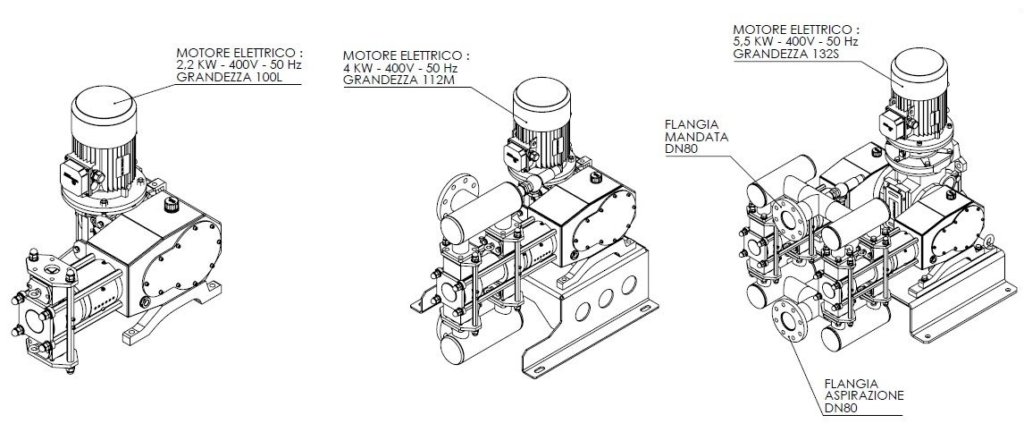The pump type that is most suitable for the pressure transfer of viscous and abrasive fluids is definitely the piston slurry pump.
Depending on whether the fluid is more or less abrasive, we can distinguish between piston pumps and piston-membrane pumps.
Starting with the simplest version of pumps for viscous but not excessively abrasive fluids, we have the piston slurry pump.
Autemi’s range is essentially characterised by two types of pumps:
–Mechanically driven pumps
–Hydraulically driven pumps
Mechanically driven pumps are the most ‘classic’ machines, i.e., where the main movement is via the crank and connecting rod motion conversion mechanism.
Through this mechanism, the electric motor transfers motion to the piston, which is the element that pumps the sludge, transferring it from the suction to the delivery.
The main subdivision of these pumps depends on the construction layout and the principle. The first classification we can make is:
-Single-acting pumps
-Double-acting pumps.
Subsequently, we will also distinguish according to how many bodies (cylinders) are installed in the pump.
Pumps with smaller capacities are of the single-acting type, i.e., in one revolution of the motor they only perform one pumping action. The piston in this case is called a plunger piston and it performs a useful effect (i.e., pumping) once per engine revolution.
In fact, with each revolution of the electric motor there is both a forward stroke of the piston and a return stroke: the transfer of the fluid to be processed only takes place in the forward stroke.
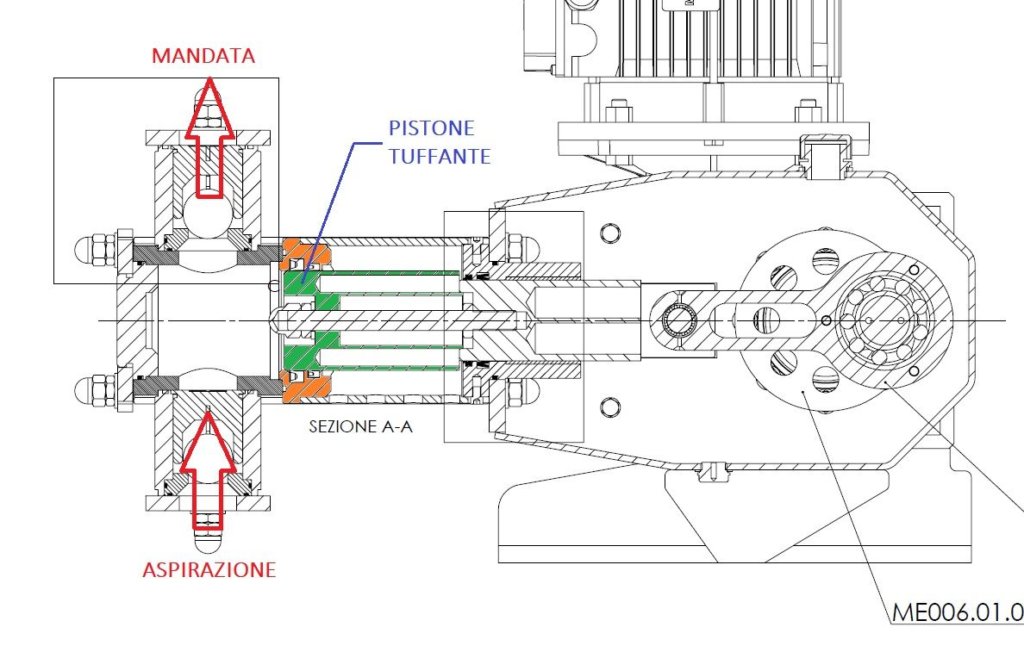
Double-acting sludge piston pumps, on the other hand, are normally used for higher flow rates.
They clearly still have the same rod-crank movement, but in this case the piston (which is no longer plunging) performs two pump strokes for each motor stroke: one in the forward stroke and one in the return stroke.
This can be clearly seen because in this case, with the geometry of the piston and rod, the suction and delivery chambers are physically separated in each movement.
Double-acting pumps therefore have a pumping rod, piston and liner, while single-acting pumps only have the plunging piston.
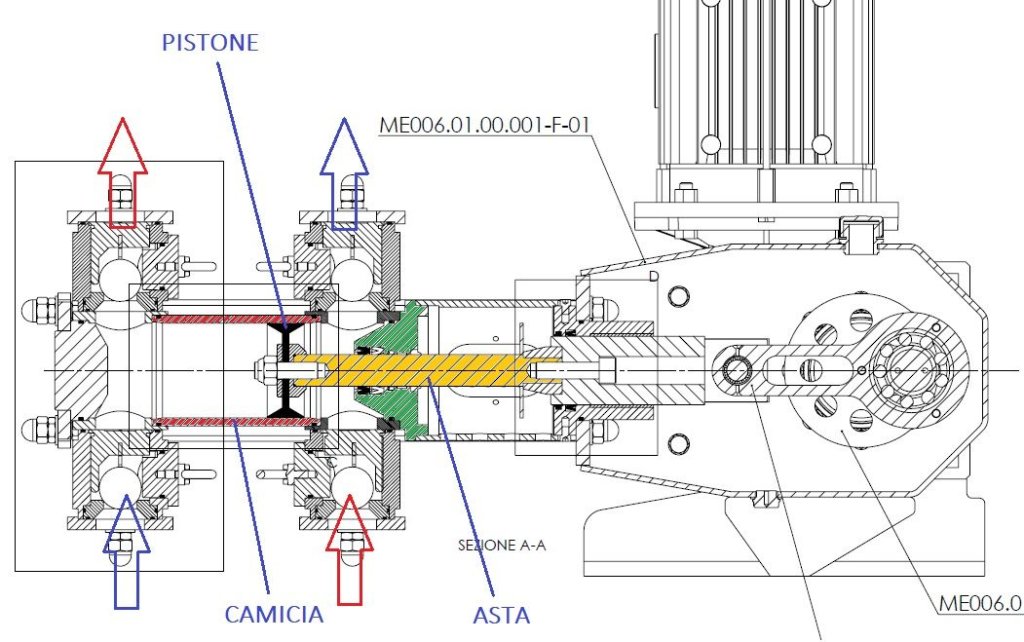
In addition to the different construction characteristics, the double-acting pump is clearly more regular in its flow rate delivery and this is very easy to observe from the diagrams shown here.
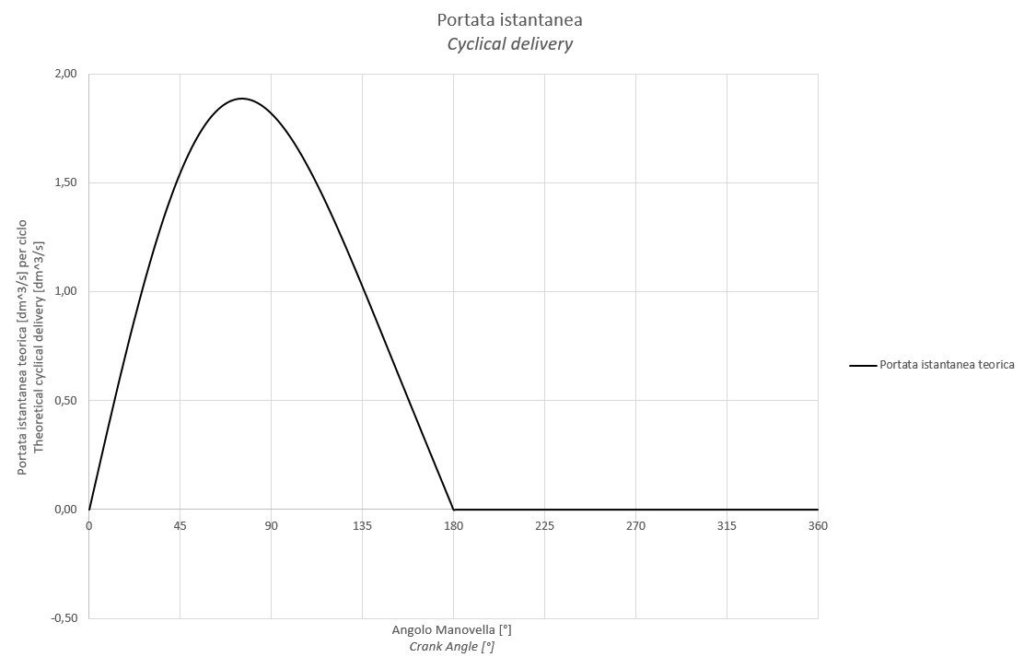
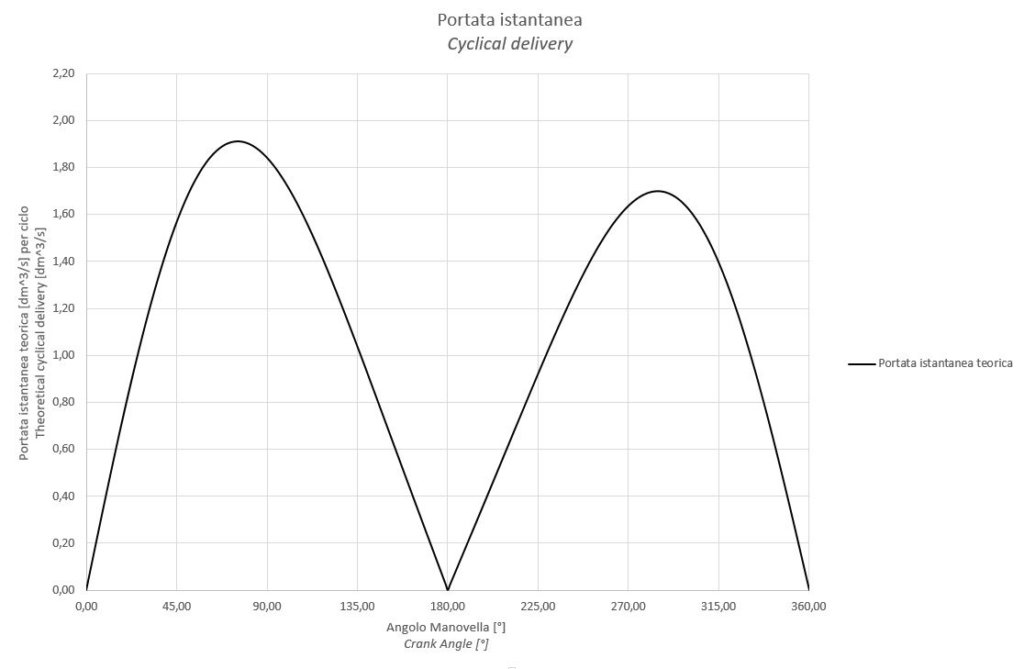
Lastly, for even larger flow rates, there are the double-acting twin-cylinder pumps where for each pump the motor provides the motion to twin bodies so that the flow rate is doubled.
